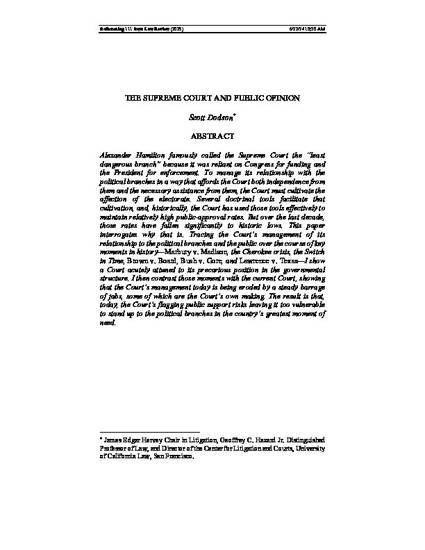
Article
The Supreme Court and Public Opinion
111 Iowa Law Review
(2025)
Abstract
Alexander Hamilton famously called the Supreme Court the “least dangerous branch” because it was reliant on Congress for funding and the President for enforcement. To manage its relationship with the political branches in a way that affords the Court both independence from them and the necessary assistance from them, the Court must cultivate the affection of the electorate. Several doctrinal tools facilitate that cultivation, and, historically, the Court has used those tools effectively to maintain relatively high public-approval rates. But over the last decade, those rates have fallen significantly to historic lows. This paper interrogates why that is. Tracing the Court’s management of its relationship to the political branches and the public over the course of key moments in history—Marbury v. Madison, the Cherokee crisis, the Switch in Time, Brown v. Board, Bush v. Gore, and Lawrence v. Texas—I show a Court acutely attuned to its precarious position in the governmental structure. I then contrast those moments with the current Court, showing that the Court’s management today is being eroded by a steady barrage of jabs, some of which are the Court’s own making. The result is that, today, the Court’s flagging public support risks leaving it too vulnerable to stand up to the political branches in the country’s greatest moment of need.
Keywords
- supreme court,
- legitimacy,
- brown,
- marbury,
- bush v. gore,
- lawrence
Disciplines
Publication Date
2025
Citation Information
Scott Dodson. "The Supreme Court and Public Opinion" 111 Iowa Law Review (2025) Available at: http://works.bepress.com/scott_dodson/82/
